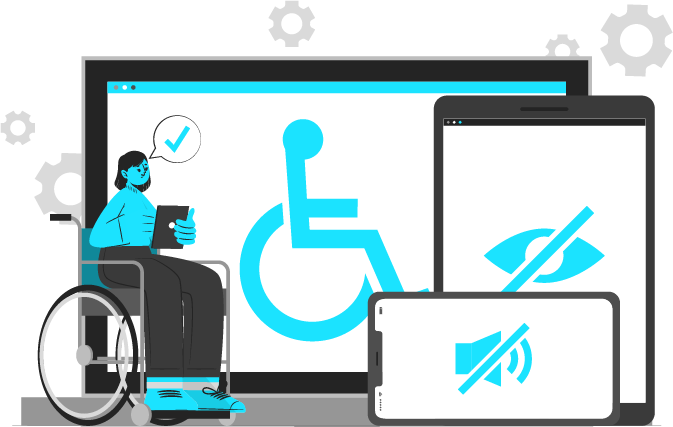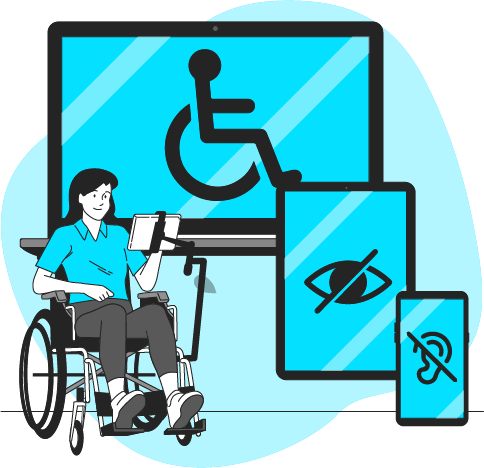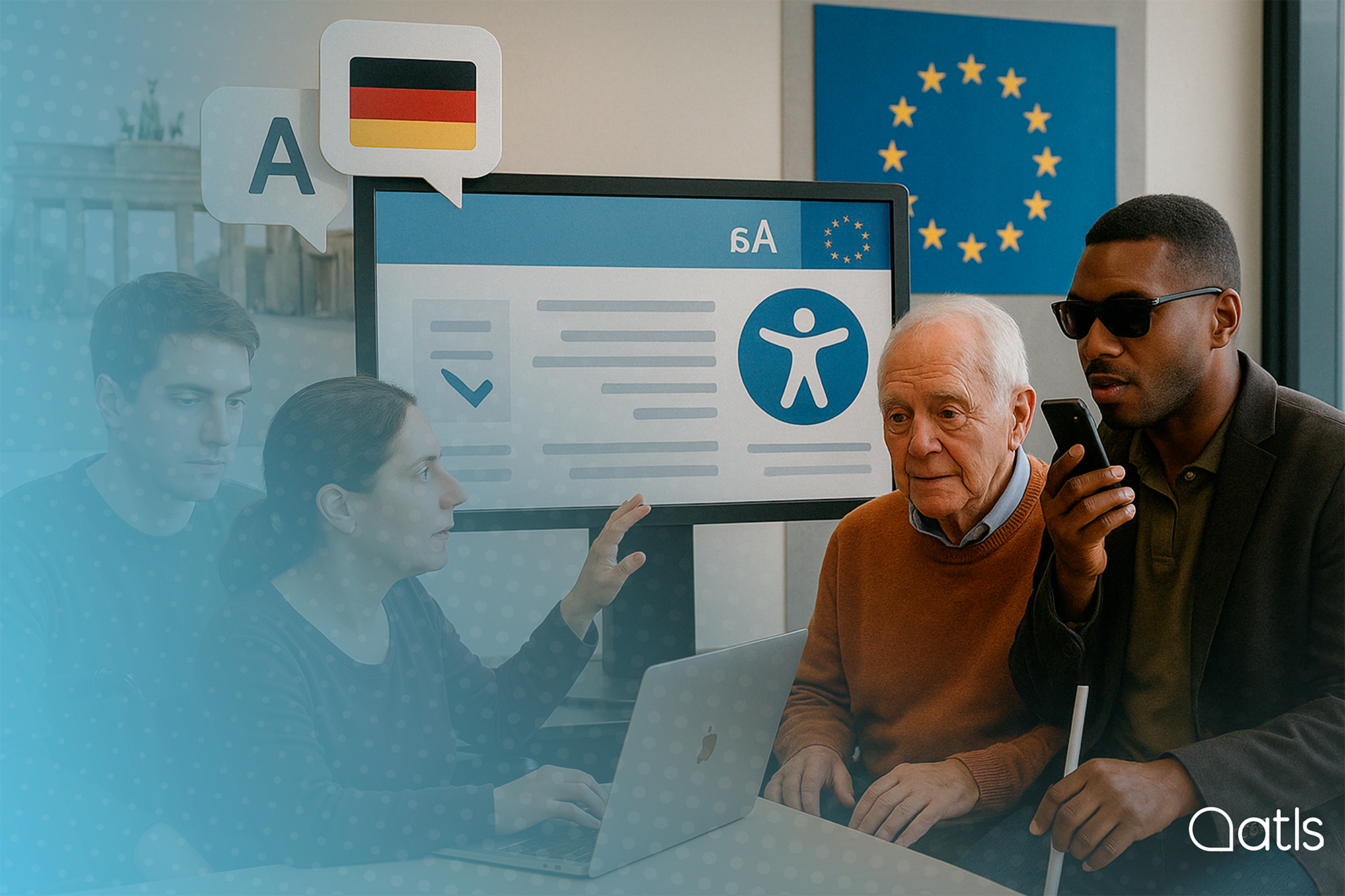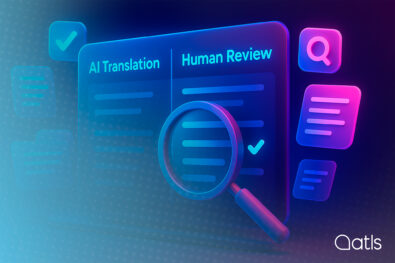On 28 June 2025 the European Accessibility Act (Directive 2019/882) will enter into force. This regulation lays down technical, linguistic and cultural requirements to ensure that all people, with or without disabilities, can access and understand digital information.
At ATLS, as a translation and language technology agency, we have taken the lead by adapting our style guides, workflows and services to comply with this legislation in a rigorous and proactive way. This article explains how we are doing this, what the law means for our customers and why accessibility is much more than a legal obligation: it is a social responsibility and a competitive advantage.
What is the European Accessibility Act?
Directive 2019/882 of the European Parliament and of the Council establishes accessibility requirements for certain products and services that are essential to people's daily lives. Its aim is to ensure equal access, especially for people with visual, auditory, cognitive or physical disabilities.
Services offered include:
- Websites and mobile apps
- E-commerce
- Digital banking services
- Transport platforms
- Audiovisual media
From June 2025, all these services must meet functional accessibility requirements, both at the technical level (compatibility with screen readers, keyboard navigation, etc.) and content level.

Language requirements: language as a barrier
The law is not limited to design or technology issues. Text and ability to understand it are also essential. Therefore, one of the core components of adaptation is the use of clear, direct, legible and understandable language, which at ATLS we have made into an official B2 style guide based on the Common European Framework of Reference for Languages.
What does B2 language mean?
Level B2 is characterised by:
- Use of simple sentences and clear syntactic structures
- Short paragraphs (3-4 lines)
- Commonly used vocabulary, avoiding technical terms or unnecessary jargon
- Neutral, professional and friendly tone
- Logical order in the presentation of ideas (introduction → development → conclusion)
This approach not only improves the general understanding of the text, but also makes it easier for people with dyslexia, cognitive difficulties or low levels of digital literacy to read.
Visual structure and accessibility
Accessible content is not limited to words. Structure is also key. Our style guide incorporates principles of accessible design such as:
- Use of hierarchical headers (H1, H2, H3) that make it easier to browse with screen readers
- Use of lists and bullets to organise information
- Introducing one idea per paragraph to promote scan reading
- Inclusion of alternative text (alt attributes, aria-label, etc.) for images, charts and visual elements
Cultural localisation: beyond translating
Adaptation also involves accurate localisation. This requires:
- Adapting date, currency and unit formats to the target language and culture
- Respecting text direction (from left to right or right to left)
- Omit or give context for non-universal cultural references
It is not just about translating literally, but about making the content truly understandable and relevant for each audience.

ATLS services for European Accessibility Act adaptation
We have structured our services into two main blocks:
Adapted text correction
We review existing texts to align them with the requirements of the law. The following is analysed:
- Language clarity
- Absence of jargon or complex structures
- Correct visual structure
- Accurate localisation
- Existence of alternative texts
Adapted translation
Translations from scratch that include all accessibility elements from the outset to ensure that the translated content:
- Maintains the original structure
- Is compatible with assistive technologies
- Includes metadata, alt attributes and other semantic elements
- Follows the B2 style guide
We also create a customised style guide for each customer, which takes into account their sector, type of content, communication channels and target audience.
Accessibility checklist
At ATLS, we have designed a checklist to ensure that all adapted content meets the accessibility standards:
- Simple and direct sentences
- Short paragraphs
- Absence of specialist jargon
- Appropriate tone for target audience
- Correct header hierarchy
- Translation of alternative texts (alt, aria-label, etc.)
- Coherent visual structure
- Cultural adaptation of content
- Compatibility with screen readers
Who is affected by the European Accessibility Act?

The regulations apply to:
- Audiovisual and digital media
- Companies that provide digital products or services in the European Union
- eCommerce platforms
- Financial institutions
- Transport operators
The only exceptions are micro-enterprises with turnover of less than 2 million Euros a year.
What is the consequence of European Accessibility Act non-compliance?
Failure to comply with the Accessibility Act may result in:
- Economic sanctions
- Legal claims by users
- Damage to corporate image
- Loss of opportunities in public tenders and auctions
On the other hand, complying with the law means:
- Greater inclusion
- Improved user experience
- Access to new audiences
- Positive reputation as a socially responsible company
A real competitive edge
Accessibility is no longer just a matter of compliance. It is a competitive edge. In a saturated digital world, offering clear, accessible and user-adapted content is a key differentiating factor. Brands that invest in accessibility:
- Improve their SEO
- Increase conversion rates
- Build user loyalty
- Are able to access new markets
ATLS adapted to the European Accessibility Act
At ATLS, we have made accessibility a core component of our services. Whether through translations, adaptations or content development from scratch, we work to ensure that every word, image and digital structure meets the goal of being clear, understandable and accessible to all users.
Our commitment does not end when the law enters effect. We will continue to develop our guides, training and technologies to always be at the forefront of inclusive communication.
If your company needs to adapt to the Accessibility Act, we can help you.
Frequently asked questions about the European Accessibility Act
What is the European Accessibility Act and when does it enter effect?
The European Accessibility Act (Directive 2019/882) is a European Union regulation lays down requirements to ensure that digital products and services are accessible for all, including people with disabilities. It will enter into force on 28 June 2025 and will affect sectors such as e-commerce, digital banking, transport, audiovisual media and mobile apps.
Which companies will the European Accessibility Act afffect?
The law will affect all companies that operate in the European Union and that provide digital products or services, such as:
Online stores (ecommerce)
Financial institutions and digital banks
Transport platforms
Mobile applications and websites
Audiovisual media and streaming services
Only micro-enterprises that invoice less than 2 million Euros a year are exempt.
What are the European Accessibility Act requirements for digital content?
In addition to technical aspects (such as compatibility with screen readers or keyboard navigation), the law requires:
Clear and understandable language (level B2 of the CEFR)
Accessible visual structure (hierarchical headings, lists, short paragraphs)
Alternative texts for images and visual elements
Cultural localisation that adapts dates, currencies and cultural references to the target audience. In summary: ##44444## ##44444## it must be possible for anyone to read, understand and use content without barriers.
What happens if a company fails to comply with the European Accessibility Act?
Non-compliance may have significant consequences:
Economic fines or sanctions
Legal claims by users Damage to reputation Public tender disadvantage






